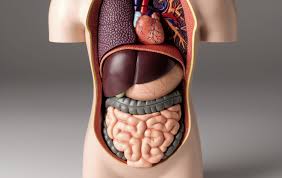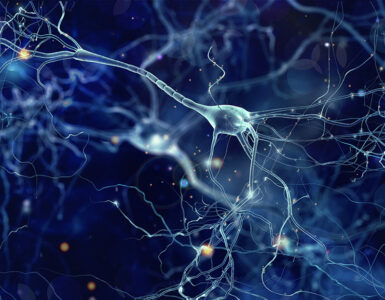by A’liya Spinner
Love After Death
Life in Elena’s household was, for the most part, normal. Her father was a working man, she was a full-time high school student, and her toddler brother went to preschool four days a week. And, of course, there was her mother, too— a dutiful, dead housewife.
Mornings were a simple routine to Elena. She woke early to dress her baby brother and coax him into eating a bit of breakfast, finishing just in time for her father to scoop the wriggling boy up and drop him off at preschool before continuing to his office. Then, Elena had an hour to herself, preparing breakfast and making sure all of her homework was squared away in her backpack, things her mother had once done but could do no longer. This morning, of course, was no different.
“What do you have at school today?” Her mother’s voice asked sweetly from somewhere behind her. Elena turned away from washing her dishes in the sink, watching her mother step from the threshold of the living room to the kitchen, her body flickering for just a moment as she crossed the dead zone beneath the doorway.
“Music,” she replied, “and life science.” Before, she might’ve elaborated, but she’d learned that her mother’s new body did not retain anecdotal information very well.
“That’s exciting,” the woman replied, her dress-draped form now solidified as she stood in the kitchen, hands clasped in front of her as she smiled at her daughter. “Music has always been your favorite.”
Elena nodded. Something about her mother’s voice this morning was wrong. Probably the new software update had misaligned some of the settings; she’d tell her dad when he got home. For now, it broke the illusion. It was hard to even look at the hologram as it stood patiently just inside the kitchen doorway. Her mother had never done that— she was always moving, looking over shoulders, touching and organizing and cleaning. The hologram couldn’t do any of those things, and so it was programmed not to try.
“Maybe we can watch a movie when you get home,” the woman offered as Elena set the dishes on the rack to dry and picked up her backpack from the table.
“I’d like that,” she answered. Watching television with the AI— the “Artificial Immortal”— was one of her favorite things to do. That was when it was most like her mother, funny and analytical and full of comments. That, she knew, was because her mother’s online presence had mostly been reviews and discussions of her favorite films, and so the computer that created her AI had plenty of material to teach itself her voice and personality.
“Excellent.” The hologram smiled and nodded pleasantly. “We can watch anything you want.”
“Thanks, mom.” Elena felt weird using that word, but it was equally strange to call the hologram anything else. It’d been ten months since her mother’s death and artificial resurrection, and still, she wasn’t sure how she was supposed to act around the replica. Part of her didn’t think she ever would— although it wasn’t spoken, both her and her father knew the hologram was for her baby brother, so he wouldn’t grow up without ever knowing his mother, and not for them.
Her mother’s form followed her as Elena left the kitchen and navigated through her home. It flicked whenever it passed through areas not covered by the holographic projectors set up around their home. As she walked, she thought of all the stories she had heard of Artificial Immortals, indistinguishable from the person they had been modeled after, with perfect voices and perfect personalities. Some were even being given robotic bodies, to touch and interact with the world. Sometimes she wondered if the people she spoke to everyday— her classmates, her teachers, the busdriver— were secretly ghosts, just mimicking a person who had already died. And then she wondered if it really mattered.
Elena glanced back at her mother’s flickering effigy as she put her hand on the doorknob. She couldn’t say if her mother was really living again after death— but she had to admit that getting to see and talk to her every day, even knowing it was a computer doing its best to capture her voice, was better than being alone in her grief. Even if it couldn’t leave the house and its voice wasn’t quite the same, it was still a piece of her mother, immortalized.
“Love you, mom,” Elena said as she opened the door.
“I love you, too,” the hologram replied with a sweet, sincere smile. Elena smiled back and stepped out, closing the door behind her.
Artificial Immortality
We’ve all heard of Artificial Intelligence, but what if the “AI” of the future isn’t robotic intelligence at all, but rather human knowledge and personalities preserved in a computer— an artificial immortality. Rather than machines gaining lives of their own, could they be used to preserve ours?
As a concept, it seems a little far-fetched. But looking at the individual pieces, it’s not as improbable as you might believe. In late 2020, Microsoft applied for (and was granted) a patent for a chatbot technology that would comb the social media, records, texts, and files of a deceased relative or friend in order to imitate their personality. Although Microsoft went on to claim that they have no current intentions to create the actual program, the patent caused quite a public commotion, and with innovation at the forefront of modern society, it’s highly unlikely that such a potentially profitable and culturally significant technology will never be realized (or at least attempted) by Microsoft or another company in the near future.
Along with simulated personalities, the Artificial Immortals in our hypothetical future have holographic bodies that look and move like a living person. Holographic technology has been developing at a rapid pace, especially in the biomedical field. For example, industry renown Zebra Imaging has developed a hologram technology with the intention to eventually replace human cadavers with holograms in medical schools. Numerous other companies are following in Zebra Imaging’s footsteps to create programs that can simulate some or all of a human body. Some innovators have even taken it a step further, beginning to consider ways to create and implement images of specific people. A notable example of this is Aeternal, a concept for a self-driving hearse that could project a hologram of the deceased.
The technology to personalize these holograms, too, is on the rise. Although facial reconstruction from bones can be unreliable, the ability to create digital recreations of people from preexisting photos and videos is rapidly developing; some of these digital replacements are already nearly-impossible to tell from the original. Once, this technology was so expensive that it was mostly limited to recreating actors on the big screen, but as innovation and market competition increases, everyday people now have the ability to create convincing replicas, too. An example of this is “deepfake” technology. Deepfakes are pictures or videos that have been edited to look like someone else, especially celebrities, with the help of an artificial program called deep learning. Some deepfakes are harmless— such as replacing actors in movie clips— but others are made intentionally to spread misinformation or defame public figures, as they have become so convincing that many viewers cannot tell they are watching a digital replacement. This has concerning implications when it comes to combating the spreading wildfire of misleading or simply untrue information on the internet, but maybe it could be used to help people, too. If computers are already capable of making fake videos almost indistinguishable from the originals, it is incredibly likely that we’ll see lifelike digital recreations of loved ones begin to appear, able not only to recite a pre-written, but to learn and conversate in real time.
Modern Figures
One of the most immediate and popular applications for digitally recreating people is to preserve important members of our society. This could mean culturally or scientifically notable celebrities, such as tech geniuses and influential artists, but also parents who die with young children or people suffering from terminal illnesses who deserve the chance to contribute and experience more in life.
Although it may seem like vanity to preserve wealthy innovators, artists, and public figures, immortalizing pieces of these people may have more worth than it seems. Artificial intelligence already has the power to mimic certain artists’ styles well enough to fool audiences into thinking it had been made by the original artist. Combined with a recreation of the artist’s personality and personal history, computers may be able to continue producing authentic art from popular creators even after their deaths.
The same could potentially be said of inventors— a Creative AI program called DABUS is already testing the limits of AI ingenuity. DABUS’ inventor attempted to patent two of the program’s ideas with the AI listed as the inventor (the patent was denied, leading to new regulations that required patent applicants to be “natural people”.) But if DABUS can invent with only modern technology, it’s plausible to imagine that an AI intelligence patterned after a real person— with all of their quirks, personality, and genius— may someday continue inventing even after their flesh-and-blood body’s death.
But how could this technology improve the lives of everyday people, and not just the upper, wealthy echelons of society? One way may be to offer a unique form of justice or recompense. Tens of thousands of people die prematurely (<75) every year, not only from fatal illness, accidents, and homicides, but also from causes that could have been prevented with increased or more equitable access to medical care or resources, the result of a systemic problem that treats some lives as more significant than others. Living again in the form of an AI may not exactly preserve a person’s consciousness or amend the conditions that led to their death, but it does enable certain key parts of their personality to continue interacting with loved ones and passions. Immortalizing those we lose to preventable causes honors their lives and gives them, in a certain sense, a second chance.
Digital recreations and “artificial immortals” may even be used to provide justice and second chances to the living, not just the deceased. Although grief is difficult for everyone, the death of a parent in particular can cause devastating, lifelong trauma and mental barriers to young children, and emotionally strain surviving family members. Artificial recreations of parents may help to guide children and spouses through the grieving process, and prevent the development of depression, PTSD, emotional repression, or other mental illnesses that follow tragedy. With this perspective, Artificial Immortals may not be permanent recreations of a person, but a temporary extension of someone’s life to provide closure and comfort to those closest to an individual, which may lead to a healthier cultural view of death on the whole, if the unrelenting grief, loss, and suddenness of it can be alleviated with the help of technology.
Historical Figures
A more novel (and perhaps less ethically grey) use of personality-recreative technology is to mimic historical figures. Though more difficult due to a lack of content that can be fed to the AI, programs could still attempt to imitate notable people from history by studying their writings, biographies, and accounts. Computers can already be used to replicate photorealistic faces of historical figures from portraits, and scientists have recently begun recreating the voice of a 3,000 year old mummy by analyzing his voice box. Although primitive, the researchers believe that someday this emerging technology could be used to replicate ancient speech; combined with facial reconstruction, this could someday be used to “remake” historical figures as convincing, walking-and-talking holograms.
Resurrected historical icons won’t give us honest answers to burning anthropological questions, but AI designed to mimic certain cultures, periods, and places can still be informative, and may shed more light into how these people interacted with one another. Especially, holograms with intelligent programs capable of learning and engaging with real people could be a valuable learning tool for students of all ages.
Man or Machine?
Of course, as fantastical and potentially exciting as it sounds, this technology is not without its fair share of ethical concerns. The idea of recreating lost loved ones with an AI seems enticing, but it also begins to blur the line between not just life and death, but also sentience and imitation. As the technology used to create these artificial replicas advances, it will become increasingly difficult to distinguish simulated personality from a real person, at which point we must consider— is it a person? Does it have rights? Once created, should an artificial immortal be able to choose when it’s deactivated to die a second death?
Thinking wisely about who, when, and how we artificially extend a person’s life through a computer will be necessary if the idea can ever be implemented in a just and equitable way. Our society was built on and continues to uphold a system of oppression, and artificial immortals may contribute to the exploitation of certain groups; dead people and computers do not have rights enshrined in law. Artificial immortals may be intelligent enough to perform tasks and work jobs without being given compensation, may even be self-aware enough to know they’re being exploited while also having no autonomy or control over themselves and how they’re used. Technology augmented with human-like personalities could be invaluable as problem-solvers, inventors, and intelligent security systems, but real, digitized humans may still experience emotions, have aspirations, and deserve fair treatment as vulnerable members of our society. The problem lies in distinguishing the two— at what point does a machine become a “person”? Will it ever become possible for a computer to not only replicate, but actually, genuinely, preserve a consciousness?
As the technology to create artificial versions of the deceased will likely soon come into fruition, these questions will become all the more important. And, unfortunately, for now they have no answers. Like many new and unexplored ideas, it has the ability to both uplift, heal, and preserve, but also to potentially perpetuate oppression and injustice. Therefore, as we move forward to the increasingly digital age— with computers becoming more humanlike and humans putting more of themselves into and on computers— it’s important to be conscious of what we define as “alive”. And, perhaps most importantly of all, we should consider what it means to be “immortal”, and what we risk sacrificing in the quest to exist forever.









